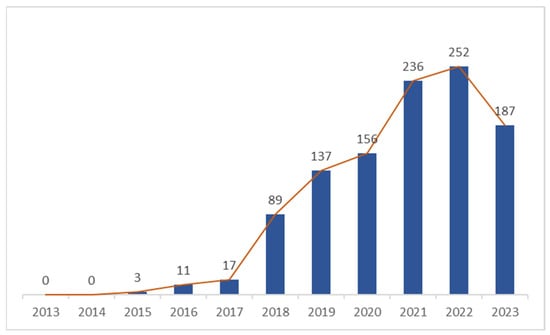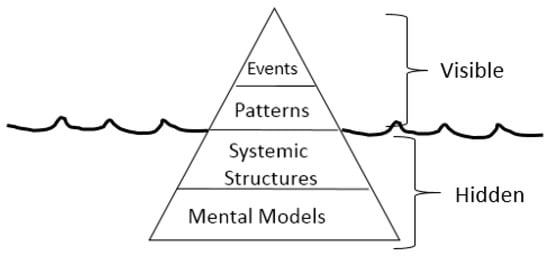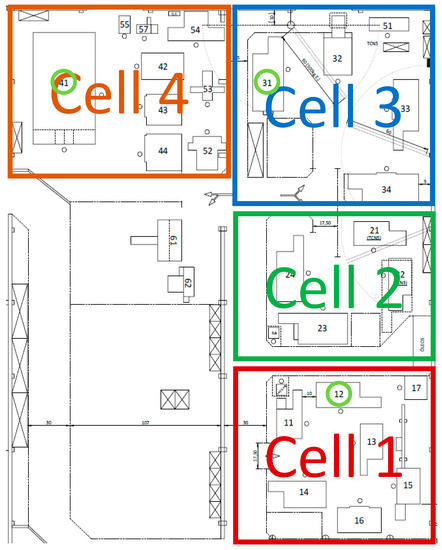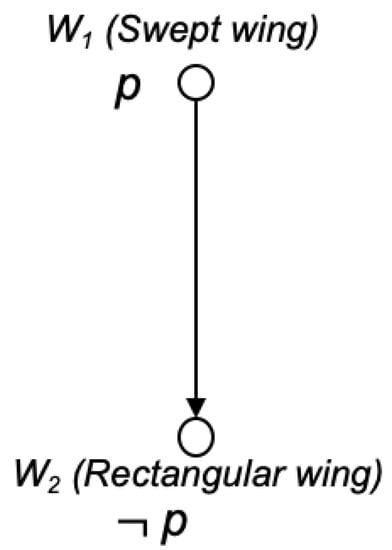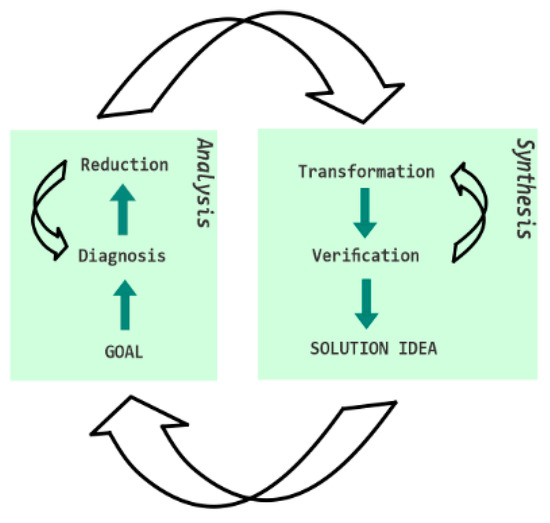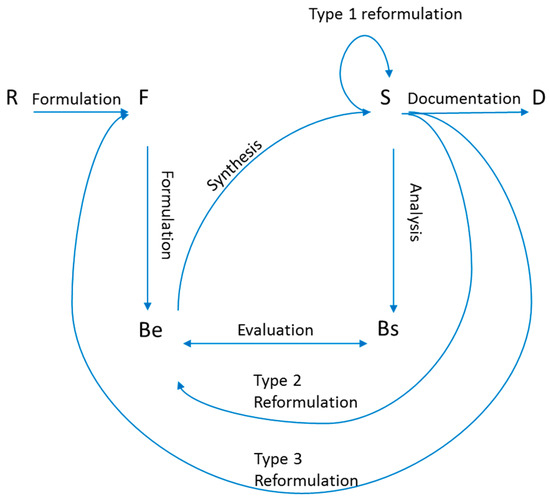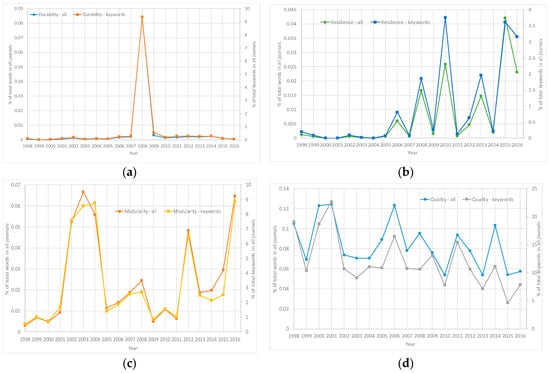Systems Engineering
A topical collection in Systems (ISSN 2079-8954).
Viewed by 81843
Share This Topical Collection
Editor
Topical Collection Information
Dear Colleagues,
Basically, Systems Engineering (SE) can be perceived in two ways:
- SE represents a trans-disciplinary endeavour enabling a shift of methods, tools, procedures or techniques applied in downstream engineering realms at a higher level of abstraction. In this way, isomorphism of engineering activities in all domains can be emphasised and serve as a basis for further development in particular fields.
- SE is a practical discipline bringing many downstream engineering disciplines together which cooperation, orchestration and synchronisation is required to design, develop and implement solutions to hard and complex problems that remain beyond the reach of any one single discipline.
Systems Engineering Vision 2025 published by the International Council on Systems Engineering highlights various imperatives related to successful development of SE and its community. It is necessary to expand application of SE across various domains, include aspects associated with soft, social or natural systems, build theoretical foundations for SE or advance tools and methods to address complex issues. To continue the momentum of contemporary development, this collection aims at publication of the novel and original research articles that deal with any aspect of the two aforementioned approaches to SE, from cradle to grave, from system design to its disposal.
Dr. Vladimír Bureš
Guest Editor
Manuscript Submission Information
Manuscripts should be submitted online at www.mdpi.com by registering and logging in to this website. Once you are registered, click here to go to the submission form. Manuscripts can be submitted until the deadline. All submissions that pass pre-check are peer-reviewed. Accepted papers will be published continuously in the journal (as soon as accepted) and will be listed together on the collection website. Research articles, review articles as well as short communications are invited. For planned papers, a title and short abstract (about 100 words) can be sent to the Editorial Office for announcement on this website.
Submitted manuscripts should not have been published previously, nor be under consideration for publication elsewhere (except conference proceedings papers). All manuscripts are thoroughly refereed through a single-blind peer-review process. A guide for authors and other relevant information for submission of manuscripts is available on the Instructions for Authors page. Systems is an international peer-reviewed open access monthly journal published by MDPI.
Please visit the Instructions for Authors page before submitting a manuscript.
The Article Processing Charge (APC) for publication in this open access journal is 2400 CHF (Swiss Francs).
Submitted papers should be well formatted and use good English. Authors may use MDPI's
English editing service prior to publication or during author revisions.
Published Papers (10 papers)
Open AccessReview
A Literature Review of the Digital Thread: Definition, Key Technologies, and Applications
by
Qiang Zhang, Jihong Liu and Xu Chen
Cited by 13 | Viewed by 8633
Abstract
The digital thread, as a crucial technology for industrial digitization and the realization of smart manufacturing, has garnered extensive attention and research in recent years. Furthermore, there is a growing interest in the key technologies supporting the implementation of the digital thread. Given
[...] Read more.
The digital thread, as a crucial technology for industrial digitization and the realization of smart manufacturing, has garnered extensive attention and research in recent years. Furthermore, there is a growing interest in the key technologies supporting the implementation of the digital thread. Given the diversity of product lifecycle models, various definitions, reference architectures, and implementation methods have been proposed to study the digital thread. Thus, this study systematically investigates the current definition, key technologies, and applications of the digital thread. A comprehensive analysis of 94 articles spanning from 2015 to 2023 was conducted, clarifying the definition of the digital thread and its relationship with related terms. Building upon this foundation, this study delves into the research methodologies concerning pivotal technologies in implementing the digital thread (such as authoritative sources of truth, data linkage, and model integration) and scrutinizes various application scenarios of the digital thread, providing a comprehensive summary. Finally, this study presents the research findings along with recommendations for future research endeavors.
Full article
►▼
Show Figures
Open AccessConcept Paper
The Meaning of “Structure” in Systems Thinking
by
Jamie P. Monat and Thomas F. Gannon
Cited by 10 | Viewed by 11351
Abstract
“Systemic structure” is an oft-used term in Systems Thinking. However, different authors use different, sometimes conflicting definitions of “systemic structure,” many of which are nebulous, and therefore its meaning is not clear. In this paper, we review the various definitions and interpretations and
[...] Read more.
“Systemic structure” is an oft-used term in Systems Thinking. However, different authors use different, sometimes conflicting definitions of “systemic structure,” many of which are nebulous, and therefore its meaning is not clear. In this paper, we review the various definitions and interpretations and develop a logical, practical definition that may be applied to develop a deep understanding of system behavior: in Systems Thinking, “structure” is the cause-and-effect manner in which system components interrelate to yield system behavior; and the rules, laws, protocols, procedures, policies, and incentives/rewards that govern those interactions.
Full article
►▼
Show Figures
Open AccessArticle
A Rapid Improvement Process through “Quick-Win” Lean Tools: A Case Study
by
Jorge Rodrigues, José Carlos Sá, Francisco J. G. Silva, Luís Pinto Ferreira, Genett Jimenez and Gilberto Santos
Cited by 33 | Viewed by 11851
Abstract
The main purpose of this paper was to introduce procedural changes based on a type of human resources management tool using Lean Leadership (LL). We sought to determine which Lean Tools (LTs) are able to promote a rapid impact on a company; namely,
[...] Read more.
The main purpose of this paper was to introduce procedural changes based on a type of human resources management tool using Lean Leadership (LL). We sought to determine which Lean Tools (LTs) are able to promote a rapid impact on a company; namely, we aimed to determine which LTs are able to facilitate fast and positive results for companies after their implementation, thus allowing for quick wins. This study was conducted at a medium-sized Portuguese company in the metalworking sector. Results were assessed from two surveys (involving 17 people) regarding perceptions of employee awareness in the machining area for Quality, Maintenance/Equipment, Process/Products, Leadership/Management by Objectives, and Trust and Training. The surveys were conducted at the beginning of the study and at the end of a quarterly period. LTs were used over a period of three months, thus enabling changes to the company’s manufacturing processes which could lead to improved organization, orientation, consistency and viability. Three months were considered an adequate time period to measure whether the tools were effective in the production of quick wins or not. LL allowed for greater awareness of the importance of LTs, the most important feature of which is the aggregation of all of the employees’ energies, which culminates in better operational efficiency and an increase in the employees’ overall positive perceptions of their company’s principles and mindset. The introduction of LL, as well as the implementation of 10 LTs, which are considered to be Quick-Win Tools, enabled employees to improve their perceptions of their company by 6.1%. Lean tools can be implemented quickly and are easily understood by their intended users. These benefits provide additional motivation for their use and for the achievement of highly satisfactory operating results across production areas. This study aims to identify which lean tools allow companies to obtain benefits/gains quickly. This outcome is the main contribution of this study to the scientific community and to companies. A Quick Win means a rapid improvement in a short period of time. As such, lean tools that provide Quick Wins also contribute to economic development. Due to the restricted time period imposed by the main purpose of this study, statistical analysis of the results was unfeasible.
Full article
►▼
Show Figures
Open AccessConcept Paper
Realizing the Role of Permissioned Blockchains in a Systems Engineering Lifecycle
by
Demetrios Joannou, Roy Kalawsky, Miguel Martínez-García, Chris Fowler and Kevin Fowler
Cited by 15 | Viewed by 5048
Abstract
A key requirement for an integrated digital tool chain is secure access and control of data assets. Not all stakeholders will have the same access to or control over the flow of information, some will be able to input or change data whilst
[...] Read more.
A key requirement for an integrated digital tool chain is secure access and control of data assets. Not all stakeholders will have the same access to or control over the flow of information, some will be able to input or change data whilst others will only be able to read the data. Simply providing secure access protocols is not sufficient because copied data can quickly become disassociated and modified from its original instantiation, leading to its reuse elsewhere or later in the lifecycle but in an inappropriate way. Therefore, data management mechanisms are required that capture information about the data along with any decisions or modifications it has undergone during the course of its life, thus providing complete traceability for later validation purposes. This undertaking is essential across the systems engineering lifecycle. This pursuit involves controlling who can access and modify data within the lifecycle. This paper describes a solution to this by the introduction of blockchain technology, a relatively new technology that allows digital information to be distributed but not copied, making it an immutable set of time-stamped data managed by a network of connected systems and services. Though blockchain technology is not commonly referred to when discussing Industry 4.0, the technology’s capabilities should add value when applied in a context of data management and security within the lifecycle of a product or services and in conjunction with digital twins, big data, and IoT. This paper describes how permissioned blockchains can be implemented within a systems engineering lifecycle, providing example architecture patterns showing how data provenance can be maintained throughout.
Full article
►▼
Show Figures
Open AccessArticle
Designating Regional Elements System in a Critical Infrastructure System in the Context of the Czech Republic
by
Petr Novotny and Michaela Janosikova
Cited by 11 | Viewed by 5050
Abstract
Critical infrastructure is a complex system whose disruption or failure results in significant impacts on state interests, i.e., territorial security, economy, and the basic needs of the population. The current European Critical Infrastructure Protection Model does not allow the direct identification of critical
[...] Read more.
Critical infrastructure is a complex system whose disruption or failure results in significant impacts on state interests, i.e., territorial security, economy, and the basic needs of the population. The current European Critical Infrastructure Protection Model does not allow the direct identification of critical elements at the regional level. Based on this, the paper brings a proposal for a unified system of critical infrastructure design based on a bottom-up approach. It is a progressive approach, utilizing contemporary trends in the application of science-based knowledge to critical infrastructure. A holistic view of this issue allows us to take into account the needs and preferences of the population, the preferences of the stakeholders and the local conditions of the region under consideration. The novelty of this approach is seen, in particular, in the identification of regional critical infrastructure elements through an integral assessment of these elements’ failure impact, not only on the dependent subsectors, but also on the population (population equivalent) in the assessed region. The final part of the paper presents a case study demonstrating the practical application of the proposed system to the road infrastructure in the Pardubice Region of the Czech Republic.
Full article
►▼
Show Figures
Open AccessArticle
Systems Engineering Approach to Food Loss Reduction in Norwegian Farmed Salmon Post-Harvest Processing
by
Mohd Abualtaher and Eirin Skjøndal Bar
Cited by 9 | Viewed by 6133
Abstract
The United Nations 2030 Agenda for Sustainable Development set the target of halving per capita global food waste and reducing food losses, including post-harvest losses. Food loss is a significant global challenge rising from the decrease in food quantities available for human consumption
[...] Read more.
The United Nations 2030 Agenda for Sustainable Development set the target of halving per capita global food waste and reducing food losses, including post-harvest losses. Food loss is a significant global challenge rising from the decrease in food quantities available for human consumption because of decisions and actions taken by food manufacturers and suppliers before it even reaches the retail market. Food loss within the Norwegian farmed salmon post-harvest processing system could be reduced by making change in the system’s behavior. This study, by following systems engineering principles, aimed to develop insight into the salmon post-harvest processing system’s behavioral dynamics causing current food loss and to consider conceptual keys to solutions. This study tied the food loss problem to systemic behavior of byproducts downgrading to non-food uses as the major cause. The decisions made on the materials flow are based on product design, quality control, and environmental solutions. Making a decision to conserve byproduct materials by prioritizing keeping them within the human food chain requires supportive data on their true potential as a food source. The system’s information pool that decision makers rely on can be fortified with the system’s engineering multidisciplinary outcomes that will enable the necessary paradigm shift to achieve the quested food loss reduction.
Full article
►▼
Show Figures
Open AccessArticle
Theoretical Foundations for Preference Representation in Systems Engineering
by
Hanumanthrao Kannan, Garima V. Bhatia, Bryan L. Mesmer and Benjamin Jantzen
Cited by 6 | Viewed by 5729
Abstract
The realization of large-scale complex engineered systems is contingent upon satisfaction of the preferences of the stakeholder. With numerous decisions being involved in all the aspects of the system lifecycle, from conception to disposal, it is critical to have an explicit and rigorous
[...] Read more.
The realization of large-scale complex engineered systems is contingent upon satisfaction of the preferences of the stakeholder. With numerous decisions being involved in all the aspects of the system lifecycle, from conception to disposal, it is critical to have an explicit and rigorous representation of stakeholder preferences to be communicated to key personnel in the organizational hierarchy. Past work on stakeholder preference representation and communication in systems engineering has been primarily requirement-driven. More recent value-based approaches still do not offer a rigorous framework on how to represent stakeholder preferences but assume that an overarching value function that can precisely capture stakeholder preferences exists. This article provides a formalism based on modal preference logic to aid in rigorous representation and communication of stakeholder preferences. Formal definitions for the different types of stakeholder preferences encountered in a systems engineering context are provided in addition to multiple theorems that improve the understanding of the relationship between stakeholder preferences and the solution space.
Full article
►▼
Show Figures
Open AccessArticle
TRIZ for Digital Systems Engineering: New Characteristics and Principles Redefined
by
Kari Lippert and Robert Cloutier
Cited by 9 | Viewed by 10987
Abstract
While innovation from the systems engineer is desirable at every step in all phases of systems engineering, there must be a methodology to evaluate alternatives. A formal methodology, complete with verification and validation of the results, was developed in 1946 by Soviet engineer
[...] Read more.
While innovation from the systems engineer is desirable at every step in all phases of systems engineering, there must be a methodology to evaluate alternatives. A formal methodology, complete with verification and validation of the results, was developed in 1946 by Soviet engineer Genrikh Saulovich Altshuller and is known as “The theory of inventor’s problem solving”, or TRIZ. This approach improves the way a systems engineer’s thinking progresses about a problem’s solution from “what is” towards “what will be” in the innovative development of a solution. The original distinguishing features of systems used in TRIZ were derived from innovations addressing physical, mechanical system, and few of them apply to digital systems. This paper presents additional characteristics that should be considered in the Reduction phase when applying TRIZ to innovation in digital systems engineering and a redefinition of the principles. With the additions of these distinguishing features for digital systems, TRIZ will become an invaluable tool for the digital systems engineer.
Full article
►▼
Show Figures
Open AccessArticle
Agent-Based Simulation of Hardware-Intensive Design Teams Using the Function–Behavior–Structure Framework
by
Mitch Bott and Bryan Mesmer
Cited by 5 | Viewed by 6724
Abstract
Agile processes have been used in software development, with many case studies indicating positive changes in productivity when these processes are used. Agile processes are beginning to be applied to work beyond software-centric systems. There does not yet exist a diverse set of
[...] Read more.
Agile processes have been used in software development, with many case studies indicating positive changes in productivity when these processes are used. Agile processes are beginning to be applied to work beyond software-centric systems. There does not yet exist a diverse set of studies on the effectiveness of Agile processes on hardware-intensive systems. The research in this article applies a modeling and simulation-based approach which uses the function–behavior–structure framework to evaluate the effectiveness of waterfall and Agile processes. The simulation was validated against case studies of software-centric design efforts. When applied to a space launch vehicle—a highly coupled, hardware-intensive system—the simulation shows that the benefits of Agile may not be as great as those seen with software-intensive systems.
Full article
►▼
Show Figures
Open AccessArticle
Trends in Occurrences of Systems Engineering Topics in Literature
by
Garima Bhatia and Bryan Mesmer
Cited by 9 | Viewed by 7597
Abstract
Examining past research using content analysis can provide detailed information about the trends a discipline has displayed over years or decades. Disciplines such as software engineering and hospitality management have used methods for analyzing topic frequencies in the past. This paper uses similar
[...] Read more.
Examining past research using content analysis can provide detailed information about the trends a discipline has displayed over years or decades. Disciplines such as software engineering and hospitality management have used methods for analyzing topic frequencies in the past. This paper uses similar methods to study the presence of systems engineering topics in literature to understand the occurrence of approaches and metrics in the community over time. This paper reviews the trends of systems engineering topics over the years 1998–2016 by performing a content analysis of four systems engineering and design engineering journals. A mathematical analysis of the trends is performed using rank ordering and a rank correlation metric. The study shows that model-based approaches have grown significantly since the early 2000s, as advocated in the INOCSE MBSE initiative, while other approaches such as Taguchi’s method and axiomatic design have been seen less frequently in literature. Systems engineering metrics that have been frequently seen in literature include complexity, reliability, and quality. The results from this research provide a portrait of the systems engineering landscape.
Full article
►▼
Show Figures





